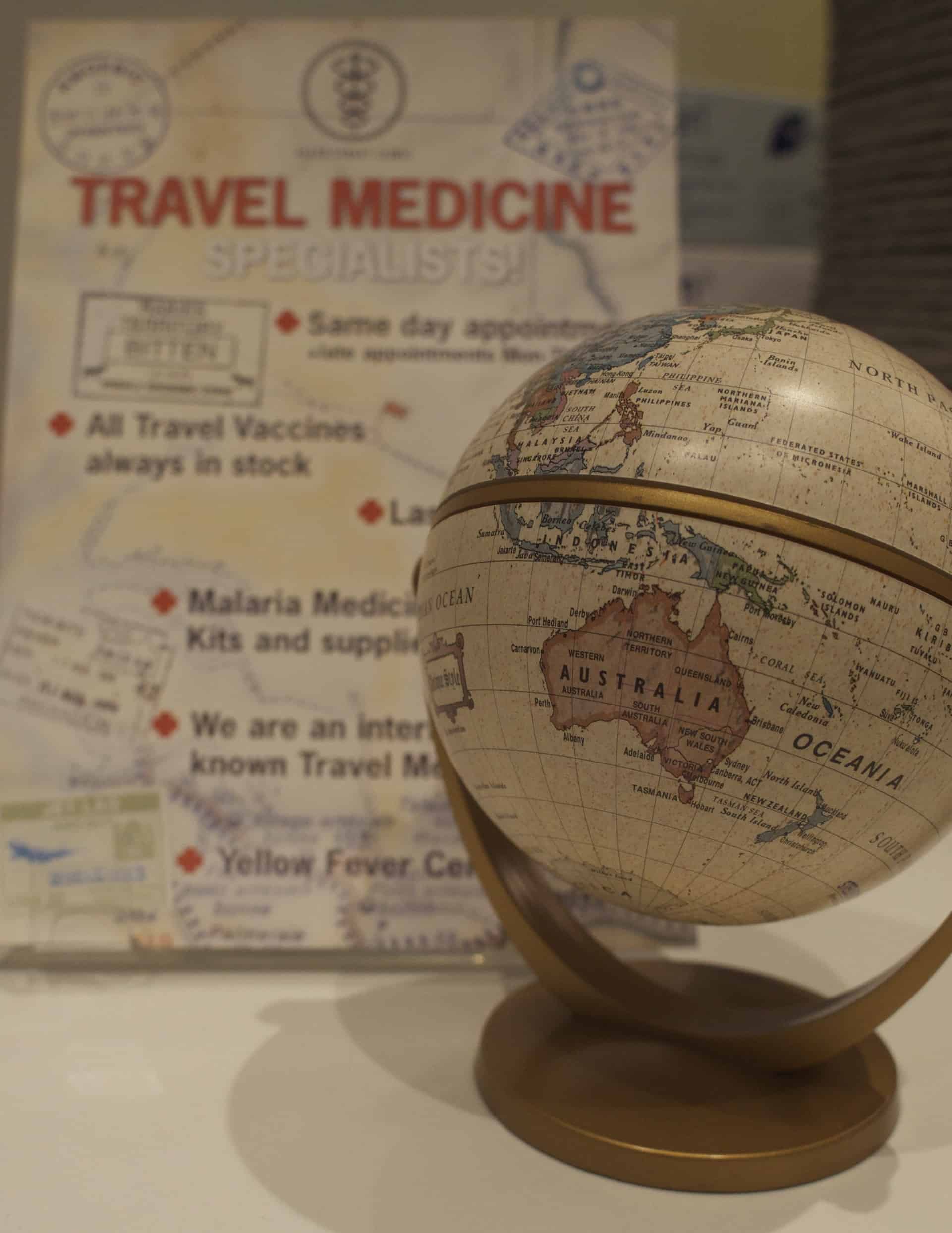Month: November 2019
The Philippines is a fascinating archipelago, made up of thousands of islands where you can explore stunning beaches and enjoy superb surfing and diving.
Ensure you follow our top travel tips to stay healthy.
7,641 islands, of these islands, only 2,000 are inhabited.
The Philippine archipelago is divided into three island groups: Luzon, Visayas, and Mindanao.
Vaccinations
If you are heading to the Philippines you should ensure that you are up to date with your routine immunisations. There have been outbreaks of measles and polio this year in the country so all travellers should ensure they have received 2 doses of the MMR vaccination and a full course of diphtheria, tetanus and polio (DTP) vaccinations.
In addition, it is advised that vaccinations against hepatitis and typhoid are given. Other vaccinations that can be considered are hepatitis b, rabies and Japanese encephalitis. Find out more about our wellness and travel vaccinations.
Rabies
Rabies is an especially high risk in the Philippines. It is a virus found in the saliva and bodily fluids of mammals. It is transmitted to humans by the bite, scratch or lick to open skin. Once the virus enters the body and the nervous system, it is fatal. There is a large number of stray animals in the Philippines so extra care should be taken to avoid contact with animals. Pre-travel rabies vaccinations are strongly recommended for travellers to the Philippines. There have been reports of falsified rabies vaccinations and immunoglobulin circulating in the country meaning anyone exposed to the virus seeking medical treatment in-country may not receive the proper treatment.
Malaria
The majority of the Philippines is low to no risk of malaria. Palawan, Tawi Tawi, Zambales and Zamboanga del Norte present a higher risk of malaria. Most travellers will not require anti-malarial medication providing they are careful not to get bitten by mosquitoes. The malaria mosquitoes are most active during the evening, so if you plan to visit a high-risk area, ensure you are cautious between the hours of dusk and dawn and aim to sleep under a mosquito net to prevent bites whilst you sleep.
Insects
The Philippines has a risk of several non-vaccine preventable viruses that can be spread by mosquitoes. Dengue fever, chikungunya and zika virus are the main culprits. These viruses are spread by mosquitoes that predominantly bite in the day. As there is no vaccination nor medication that will prevent this illness, strict precautions must be taken to prevent their bites. Wear long loose clothing and cover up as much as possible, particularly between dawn and dusk. Wear a good insect repellent with a minimum of 50% DEET in it, and treat clothes with the insecticide permethrin for added protection.
The Philippines Department of Health (DoH) declared a national dengue epidemic on 6 August 2019. Continue to follow NaTHNaC advice and take precautions to avoid being bitten by mosquitoes
See our ultimate bug kit.
Water sports
The Philippines is made up of over 7000 islands and the main way of reaching them is by boat. If you are prone to travel sickness you may want to ensure you pack some medication to prevent this so not to interrupt your experience. There is an abundance of pristine coral reefs throughout the archipelago making the country perfect for water sports. Whether you are snorkelling, surfing or scuba diving, if you plan to take the plunge you need to be careful to avoid coral cuts and abrasions. Extra care needs to be taken with coral cuts to prevent them from becoming infected. Packing a small first aid kit with tweezers, waterproof dressings and antiseptic is a sensible idea.
The availability of medical care varies across the Philippines, and may not meet the standards of care in the UK. Although adequate in major cities, medical care is limited in more remote areas.
Book your travel appointment today
By Anna Chapman | Travel Nurse | November 2019
Myanmar is becoming an increasingly popular destination to visit in South-East Asia.
The golden pagodas of Yangon and the stupors of Bagan are top on most travellers itineraries, alongside a trip down the Irrawaddy river to Inle Lake.
The more adventurous may head to the islands on the Myiek archipelago or hike the hill station of Kalaw. Whatever the itinerary, it is essential to ensure you have sought pre-travel advice to ensure you stay healthy whilst abroad.
Vaccines
Travellers should ensure they are up-to-date with their routine immunisations. All travellers should ensure that they have received a vaccination against diphtheria, tetanus and polio (DTP) in the last 10 years. Other vaccinations that all travellers should ensure they are up-to-date with are Hepatitis A and Typhoid. Some travellers may wish to consider vaccination against hepatitis b, rabies, cholera and Japanese encephalitis. It is best to book a travel consultation with a travel nurse to discuss your route and your plans to ensure you are protected for all circumstances.
For more information on our vaccines, please visit our travel and wellness vaccination pages.
Malaria
The cities of Yangon and Mandalay have no risk of malaria. The majority of areas that travellers visit such as Bago, Inle Lake, Kyaikto Padoga and Bagan have a low risk of malaria and anti-malarial medication is not usually advised. The states of Chin, Kachin, Kayah, Rakhine and Sagaing have a high risk of malaria. Travellers visiting these areas are advised to take anti-malarial for this part of their trip. The malaria mosquitoes are most active during the evening. So, if you plan to visit a high-risk area, ensure you are cautious between the hours of dusk and dawn. Aim to sleep under a mosquito net to prevent bites whilst you sleep.
Insects
Myanmar has a risk of several non-vaccine preventable viruses that can be spread by mosquitoes. Dengue fever, chikungunya and Zika virus are the main culprits. These viruses are spread by mosquitoes that predominantly bite in the day. As there is no vaccination or medication that will prevent these illnesses, strict precautions must be taken to prevent being bitten. Wear long loose clothing and cover up as much as possible. Particularly between dawn and dusk. Wear a good insect relevant with a minimum of 50% DEET in it. Treat clothes with the insecticide permethrin for added protection. For short adventures, this can be done before your trip.
See our Ultimate Bug Kit.
Fancy a dip in Lake Inle?
Think again. Temperatures in Myanmar can reach 40 degrees and a quick dip in the lake may sound like a good way to cool off. However, there have been recent outbreaks of schistosomiasis infection in Myanmar. Schistosomiasis is a parasitic blood fluke. The fluke lives in freshwater snails and enters through the skin when an unsuspecting person takes a dip. The fluke causes infection of the liver, bladder and bowels and can lead to long term damage. The best way to avoid this is to avoid swimming or bathing in freshwater. The detection of schistosomiasis can take up to 8-weeks. You should visit a GP for a health assessment 2 months after your suspected exposure date, even if you haven’t yet returned to the UK.
First Aid
Some areas of Myanmar are remote. The further in-country you travel, the harder it will be to access medication and first aid supplies. In some areas, access will be non-existent. Packing a good basic first aid kit is essential to help treat minor injuries and illnesses. Include items such as dressings, plasters and antiseptic cream. They can help with minor cuts, scrapes and blisters. It is useful to pack items that can alleviate pain and treat upset stomachs, as these are common traveller’s health problems. Another medical kit you may want to consider is a worldwide gastro kit. Other items you may want to consider are anti-histamines for any mild allergic reactions.
If you take prescription medication to ensure you pack sufficient for your trip and carry a record of the medication with you.
Book your travel appointment today
By Anna Chapman | Travel Nurse | November 2019
How to Stay Healthy This Winter
When the temperature drops outside, it’s tempting to reach for comforting, high-calorie food and avoid exercise. Feeling cold, along with short days and weight gain can lead to the onset of Seasonal Affective Disorder or depression in the winter months.
Fleet Street Clinic’s Consultant Dietitian, Ruth Kander BSc (Hons) gives some practical advice on what you can do to avoid the winter blues.
Consume a Variety of Foods
By eating foods from all the food groups, you will have all the nutrients you need to stay healthy and keep winter germs at bay whilst maintaining your energy levels.
Eat Plenty of Fruits and Vegetables
These will give you vitamins and minerals to help your body fight winter bugs. Vitamin C is especially beneficial in the fight against colds and sore throats. Avoid taking supplements which contain high concentrations of vitamins which can lead to medical problems. Fruit and vegetables high in vitamin C include kiwi, citrus fruits, spinach, pumpkin and sweet potato. Zinc is also a good mineral to help fight winter infections and boost the immune system. Foods containing zinc include fish, oysters, poultry, eggs, milk, unprocessed grains and cereals. If you’re short on time, using a blender to create a vegetable and fruit drink is a great way to pack your diet full of vitamins. Try combining lettuce, cucumber, spinach, ginger, berries and a dash of orange juice and water for a zingy, low-sugar start to the day.
Keep the Pantry Cupboard Well Stocked
Good foods to store include:
- Tinned beans and lentils
- Tinned tomatoes
- Whole-wheat pasta
- Brown rice
- Couscous and noodles
- Wholegrain cereals – for example, Porridge and Weetabix
Plan Your Meals
Make soups and casseroles in advance and freeze. That way you can come home to a nutritious meal in the evenings. Simply take out of the freezer in the morning so that they are ready to heat up after work.
Watch Portion Sizes
To avoid eating too many carbohydrates, try eating your meals at the table with the TV turned off, use smaller plates and reserve half your dinner plate for vegetables. If you want more after your first serving, have some soup or more hot vegetables.
Stay Active
It’s tempting to reduce your exercise regime in the colder months. But small efforts can go a long way to help stave off winter weight gain. Going for a regular, brisk walk or using an exercise video at home can be enough to maintain your weight and stay healthy over the winter.
Drink Plenty of Fluids
Try to avoid getting dehydrated. This can make you feel overly tired and unnecessarily run down. Drink plenty of fluids throughout the day that are either low calorie or calorie-free – aim for 2 litres a day. Be aware that your daily hot drink from the coffee shop can contain 360 calories or more!
Looking for an alternative to still water? Try green tea, regular tea, herbal teas, regular coffee, hot no added sugar cordial or lemon water.
Consult Fleet Street Clinic
Ruth Kander holds a virtual clinic every Friday from 9am-2pm for individual dietitian consultations and ongoing weight management courses. Please call our reception team on +44 20 7353 5678 if you would like to request a face-to-face appointment





